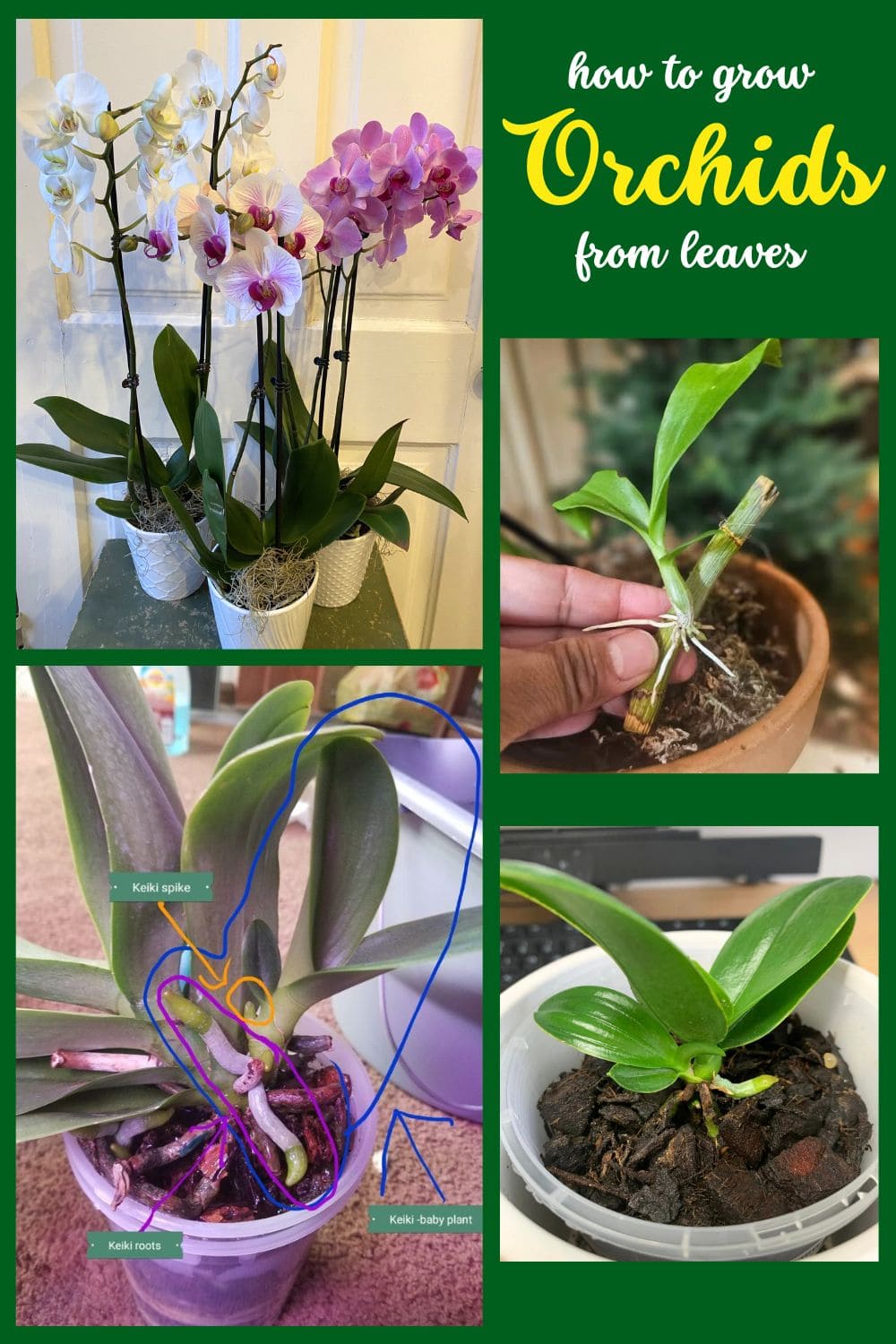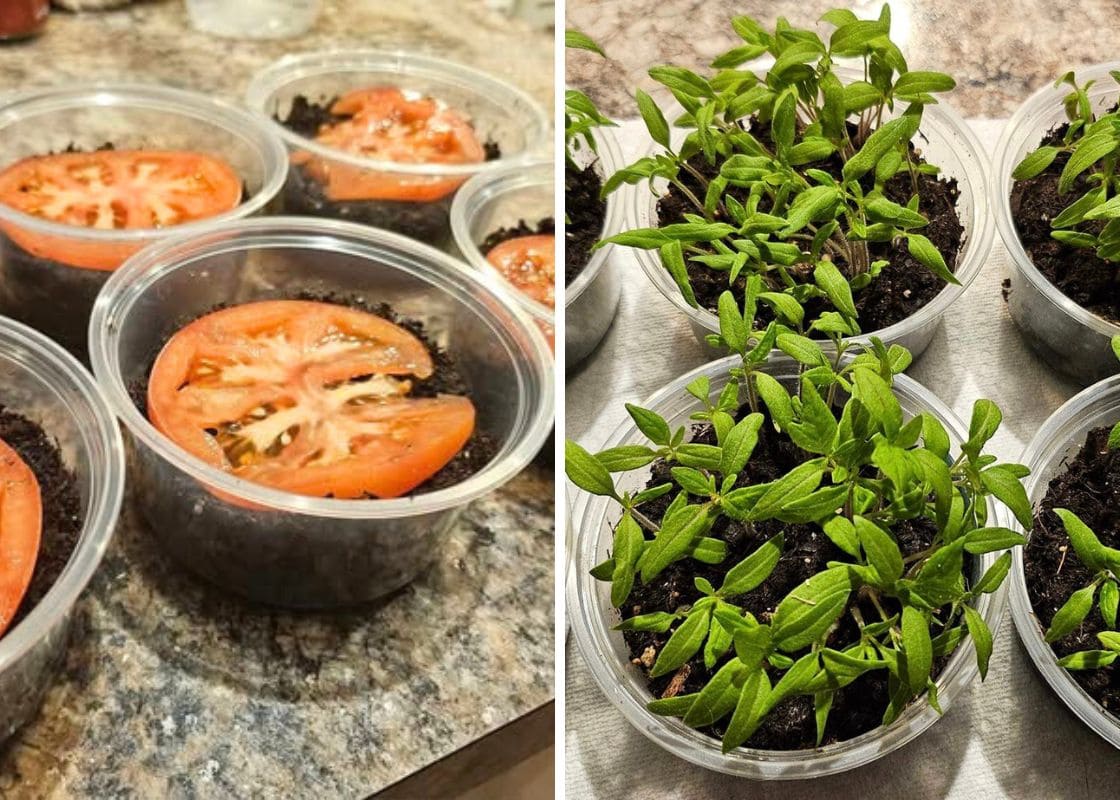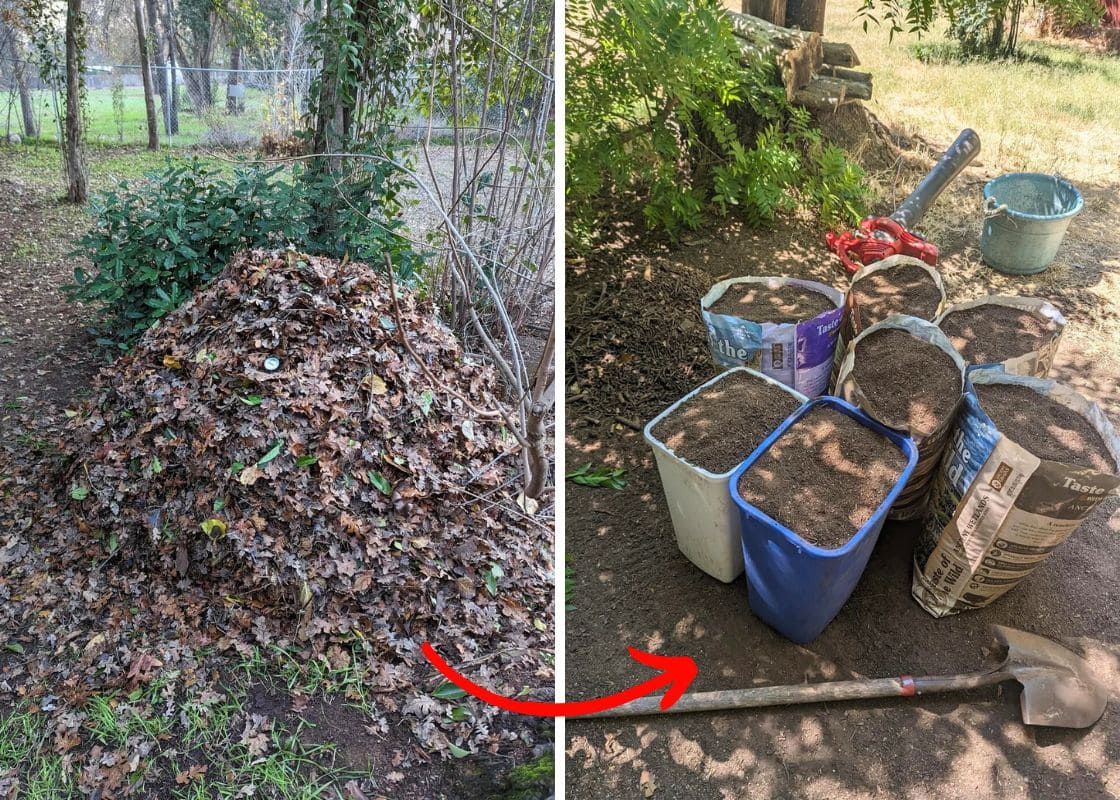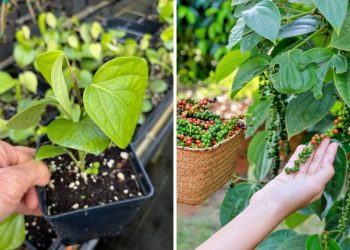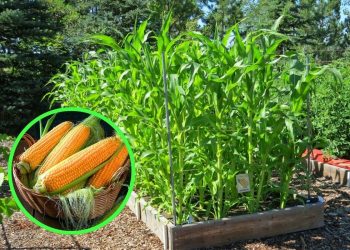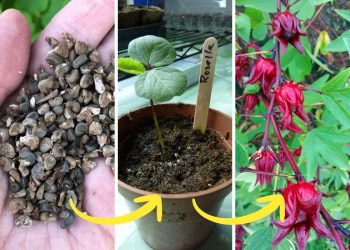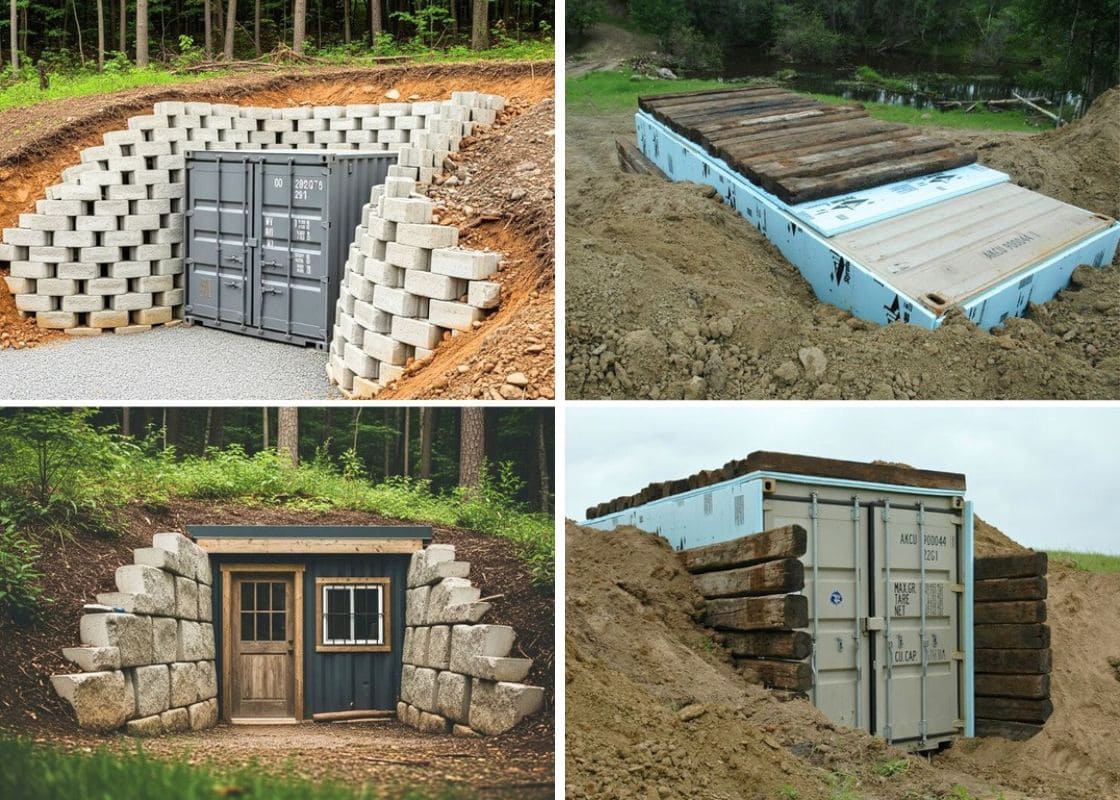If you love orchids as much as I do, you’ve probably wondered if you can grow them from just a leaf.
The idea is tempting, after all, many plants, like succulents or African violets, can grow new roots from a single leaf. But orchids? They play by their own rules.
I’ve been growing orchids for years, and I can tell you right away that a standalone leaf won’t grow roots or turn into a new plant.
However, if you have an orchid leaf attached to a piece of the stem or if you find a small offshoot called a keiki, then you’ve got a real chance at successful propagation.
Can You Really Grow Orchids from Just a Leaf?
Unlike pothos or jade plants, orchids don’t regenerate from a single leaf. That’s because orchids grow from specialized structures, like rhizomes (in sympodial orchids like Cattleyas and Dendrobiums) or monopodial stems (in orchids like Phalaenopsis).
These structures store energy and nutrients and are responsible for new growth.
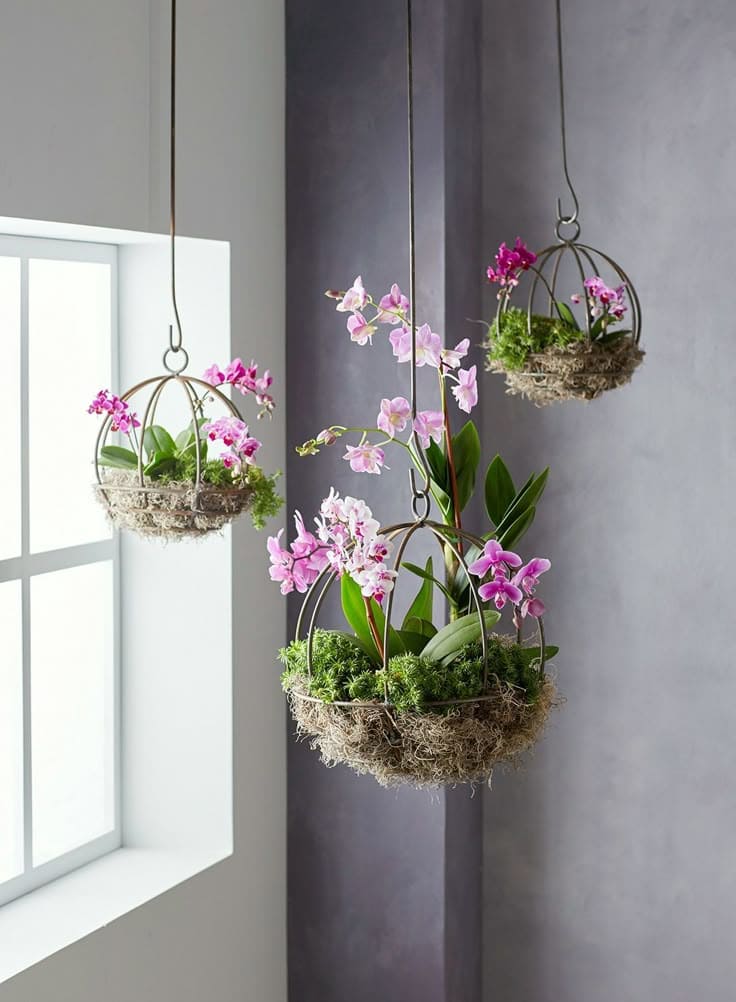
If you’ve ever heard someone claim they grew orchids from leaves, they likely had a cutting with part of the stem attached or they started with a keiki, which is a baby orchid that forms on the flower spike of a mature plant.
So, while a single leaf on its own won’t sprout roots, you can still propagate orchids if you have the right plant material.
How to Grow Orchids from a Leaf (with a Stem or Keiki)
1. Identify a Healthy Keiki or Leaf with a Node
A keiki (Hawaiian for “baby”) is a small orchid clone that grows from a node on the mother plant’s flower spike or stem. If you spot one, you’re in luck!
If you don’t have a keiki, look for a healthy leaf attached to a small section of the stem. This stem segment should have a dormant node that could sprout roots.
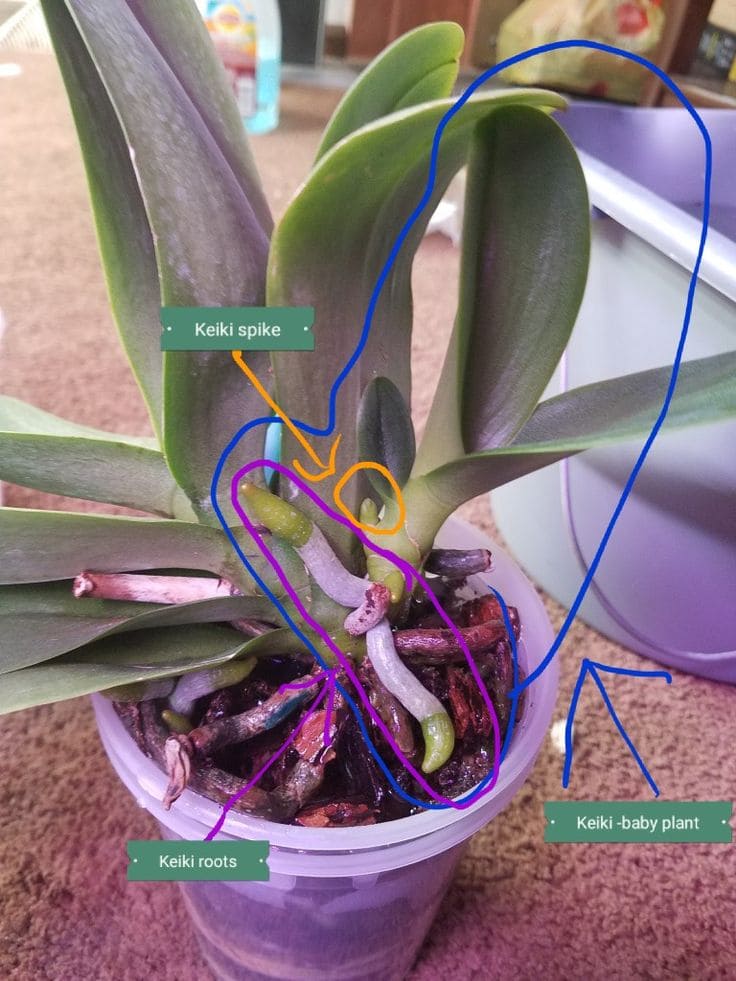
2. Use Sterilized Cutting Tools
Before cutting, sterilize your knife or scissors with rubbing alcohol or by heating the blade over a flame for a few seconds. This prevents infections, which orchids are particularly vulnerable to.
3. Cut Carefully
Next, if using a keiki, wait until it has at least two leaves and small roots (at least 1 inch long). If taking a stem cutting with a leaf, ensure the node is intact, as this is where new growth will emerge.
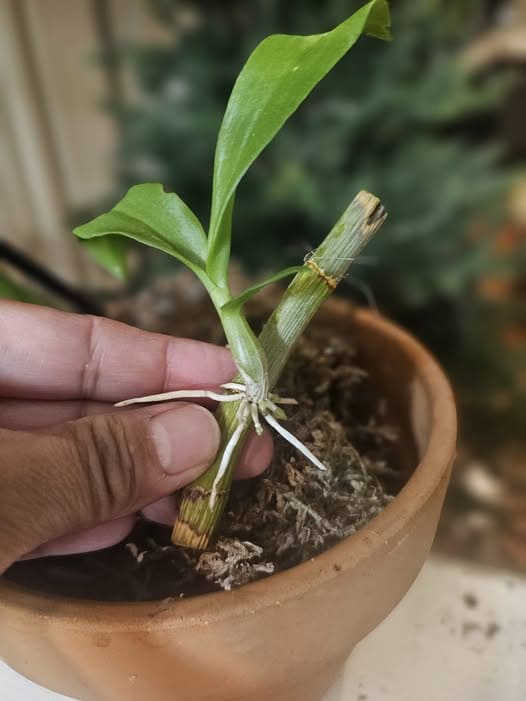
4. Let the Cutting Dry
Fresh cuts are prone to rot if planted immediately. Let your cutting dry for a few hours before placing it in a growing medium.
5. Prepare the Growing Medium
Orchids don’t like standard potting soil! Instead, use a light and airy mixture to support new root growth. I recommend you should use sphagnum moss, orchid bark chips and perlite or charcoal.
6. Plant the Cutting in the Medium
Nestle the cutting into the sphagnum moss, ensuring the node is in contact with the medium. If using a keiki, gently place its tiny roots in the moss, but don’t bury them completely.
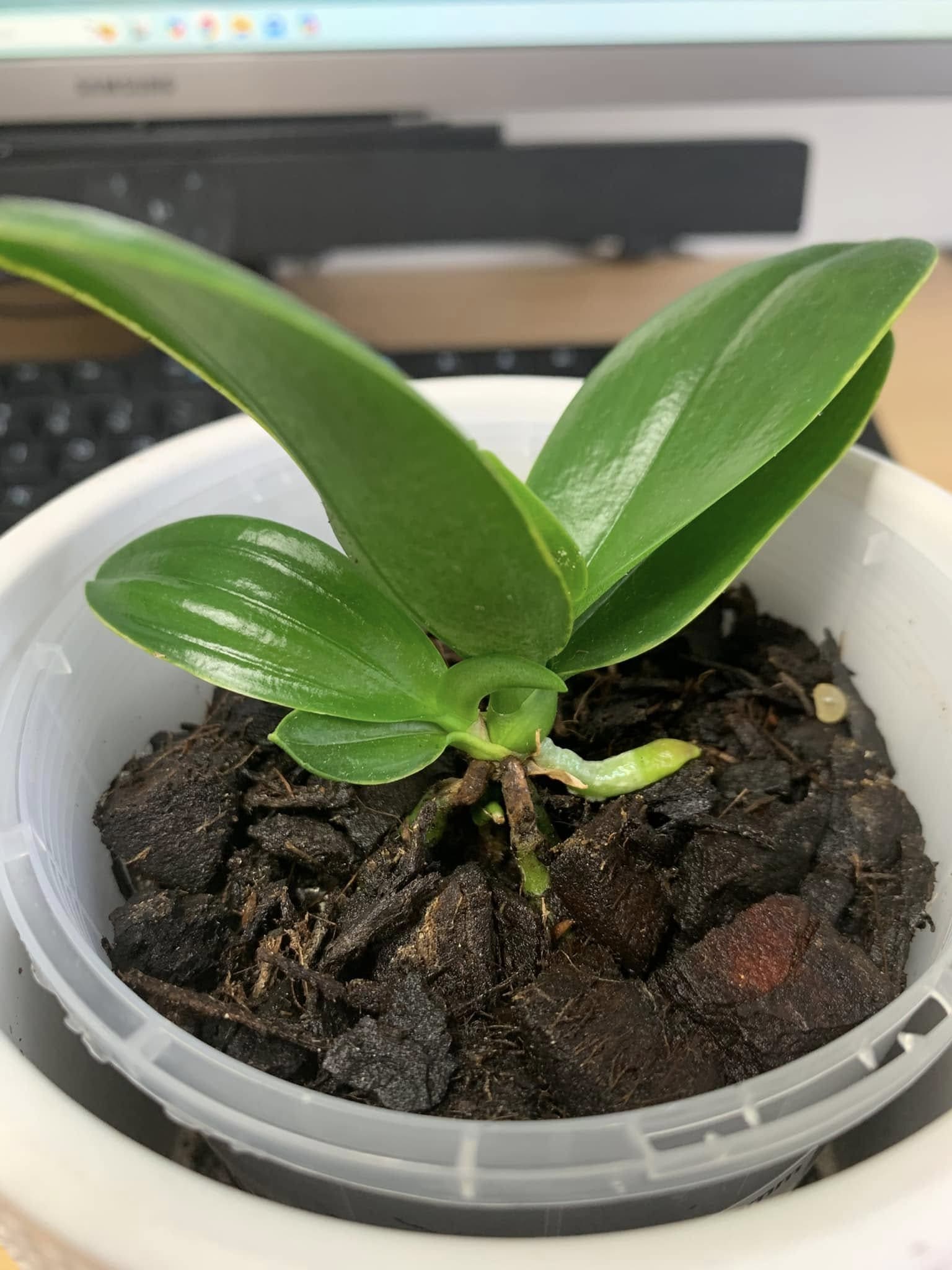
7. Provide Humidity and Warmth
Orchids thrive in warm, humid conditions. To create the perfect environment, you need to place the plant in bright, indirect light (avoid direct sunlight).
Also, maintain a temperature of 70–80°F (21–27°C) and cover the plant with a plastic bag or humidity dome to keep moisture levels high.
8. Water Lightly and Be Patient
Mist lightly to keep the sphagnum moss damp but not soggy. After that, be patient as roots may take several weeks to months to develop.
Caring for Your New Orchid
Once roots start growing, your baby orchid will need continued care to thrive. Here’s what to focus on:
- Humidity: Orchids love humidity levels of 50–70%. If your home is dry, use a humidity tray or a room humidifier.
- Fertilization: Use a diluted orchid fertilizer every two weeks to encourage growth.
- Repotting: Once roots are 2–3 inches long, transplant the orchid into a slightly larger pot with fresh orchid bark mix.
Common Problems and How to Fix Them
Leaves Turning Yellow
You can overwater or add too much direct sunlight, so cut back on watering and move the plant to a shadier spot.
No Roots Forming
It can be caused by insufficient humidity or nutrients. You should increase humidity, mist more frequently, and apply a diluted rooting hormone.
Cutting Rots Before Growth Begins
This can be caused by using too much moisture or poor airflow. So, let cuttings dry longer before planting, and ensure good ventilation.
